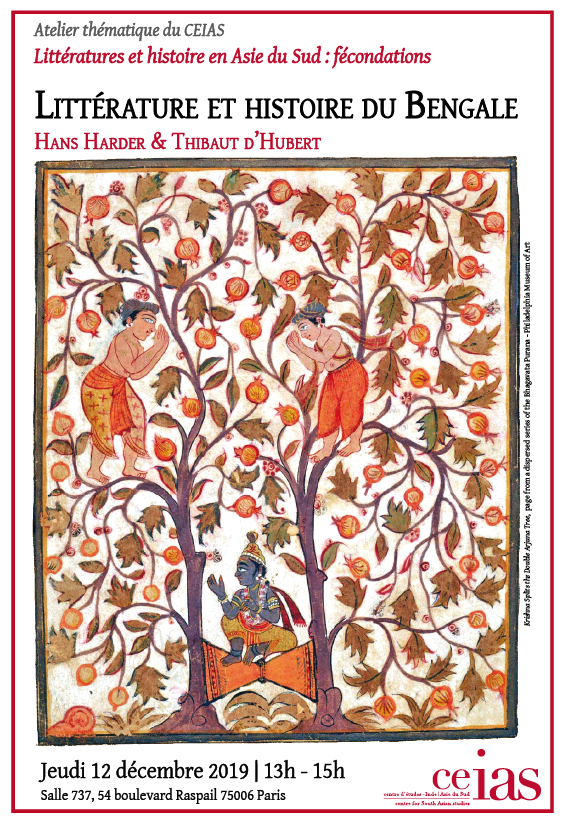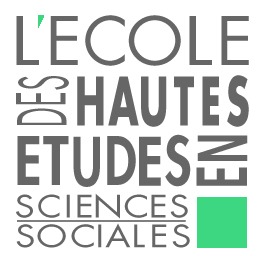Cycle - Littératures et histoire en Asie du Sud: fécondations |
Littérature et histoire du Bengale
Hans Harder & Thibaut d’Hubert
Séance en visioconférence
Dans le cadre de l'atelier thematique Littératures et histoire en Asie du Sud : fécondations
Past Futures: a survey of some literary utopias and dystopias from South Asia
Hans Harder (Universität Heidelberg)
This paper surveys and discusses a set of utopian and dystopian writings from colonial and postcolonial South Asia. In a comparative glance over texts by Bhudeb Mukhopadhyay, Rokeya Sakhawat Hossain, Rahul Sankrityayan, Va. Ra., Manto, Ghulam Abbas and others, we will enter various ladylands, poets' islands, islamistans and shining Indias.
In what sense, I will ask, are these entirely literary, but yet so acutely historical? Where do the narrative universes of dream, history and fiction converge? In pulling together these narratives from Bengali, Hindi, Urdu and Tamil literature, I will try to show how all of them sketch alternative and fictional histories for the subcontinent in an "as if" mode.
“He is an abridged transcription of the world”: The Nūrnāma tradition and musalmānī literacy in eastern Bengal (c. 17th-19th AD)
Thibaut d’Hubert (University of Chicago)
This presentation deals with Bengali renderings of a Persian text titled Nūrnāma (The Book of Light), which relates the creation of the world by God through his prophet Muḥammad in his pre-eternal form as a luminous entity. These short accounts played two roles as conveyers of knowledge on basic Islamic beliefs and cosmology, and as ritual texts meant to protect and bring prosperity to those who read and preserved the physical artefact of the book that contained those teachings. In this presentation, I will discuss the relevance of the study of the Nūrnāma tradition in eastern Bengal to understand the various aspects of musalmānī (Islamicate) literacy. We will see how the content of the text itself prompted a reflection on language, script, and the codicological features of Islamic texts in a regional context, while its transmission through vernacular versions written in Bengali or Arabic script reflects the complex scriptural landscape of 18th and 19th-century Bengal.
Les sites du CEIAS
- SAMAJ | The South Asia Multidisciplinary Academic Journal
- CEIAS - Facebook
- CEIAS - Twitter
- CEIAS - Newsletter
- Le Bulletin de la Bibliothèque
- Régionalisme & cosmopolitisme
- DELI | Dictionnaire Encyclopédique des Littératures de l’Inde
- DHARMA | The Domestication of “Hindu” Asceticism and the Religious Making of South and Southeast Asia
- TST | Texts Surrounding Texts
- STARS | Studies in Tamil Studio Archives and Society 1880-1980
- I-SHARE | The Indian Subcontinent’s Shared Sacred Sites
- Sri Lanka et diasporas
- Sindhi Studies Group
- Carnet du Master Études asiatiques
- Master “Asian Studies”
- Social Sciences Winter School in Pondicherry
- Caste, Land and Custom
- Musiques indiennes en terres créoles
 Actualités
Actualités
Écrire dans le monde indo-persan
Vie de l'École -Après un premier workshop en mai 2023 ayant permis aux jeunes chercheurs en études indo-persanes de se rassembler, ce second volet organisé par des doctorants de l'EHESS du Centre d'études sud-asiatiques et himalayennes - Cesah (EHES/CNRS) et du Centre de recherche sur les circul (...)(...)
Devenir juifs : conversions et assertions identitaires en Inde et au Pakistan
 Débat - Mardi 9 mai 2023 - 14:00Présentation« L’an prochain à Jérusalem ! », scande un homme portant une kippa dans une synagogue de Karachi au Pakistan. Ses paroles sont répétées en chœur par les membres de sa communauté, un groupe comptant près de trois cents personnes qui s’autodésignent par (...)(...)
Débat - Mardi 9 mai 2023 - 14:00Présentation« L’an prochain à Jérusalem ! », scande un homme portant une kippa dans une synagogue de Karachi au Pakistan. Ses paroles sont répétées en chœur par les membres de sa communauté, un groupe comptant près de trois cents personnes qui s’autodésignent par (...)(...)
Centre d'Études de l'Inde et de l'Asie du Sud
UMR8564 - CNRS / EHESS
54 boulevard Raspail
75006 Paris, France
Tél. : +33 (0)1 49 54 83 94
Communication :
nadia.guerguadj[at]ehess.fr
Direction :
dir.ceias[at]ehess.fr
La bibliothèque du CEIAS
Maison de l'Asie
22 avenue du Président Wilson 75016 Paris
54 boulevard Raspail
purushartha[at]ehess.fr



